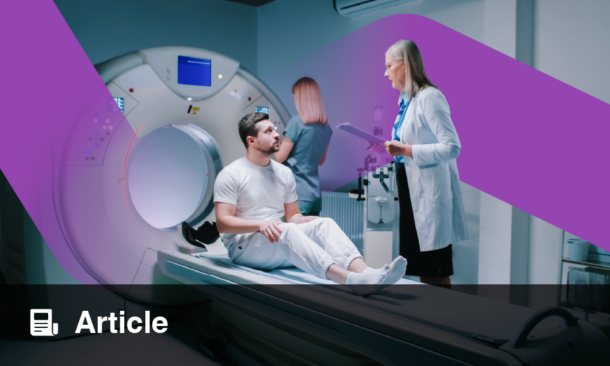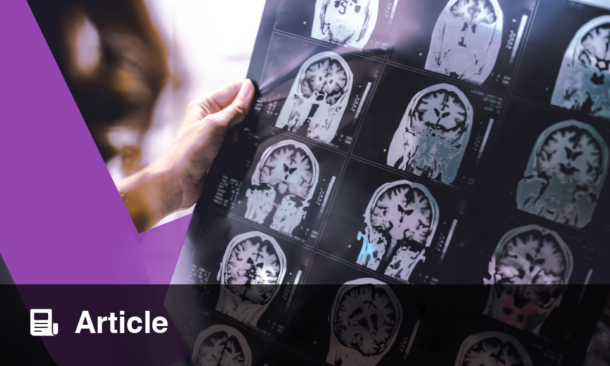INTRODUCTION
AI has rapidly emerged as a transformative force in various fields, including healthcare. In the realm of medical imaging, AI-powered tools are revolutionising the way radiologists interpret images and make diagnoses. While the potential benefits of AI in medical imaging are immense, it is also crucial to acknowledge the potential risks and limitations of its use within the medical field.1
THE GOOD: POTENTIAL BENEFITS OF AI IN MEDICAL IMAGING
Enhanced Accuracy and Efficiency
AI algorithms can analyse medical images with remarkable accuracy and speed, often surpassing human capabilities. By identifying subtle patterns and anomalies that may be missed by the human eye, AI can improve diagnostic accuracy and reduce the risk of misdiagnosis and false negatives.2-4
Improved Efficiency and Productivity
AI can automate routine tasks, such as image segmentation and measurement, freeing up radiologists’ time to focus on complex cases and patient care.5 In ultrasound, for example, AI is already being employed by several companies, including GE Healthcare (Chicago, Illinois, USA) and Butterfly Network (Burlington, Massachusetts, USA), to automate measurements and calculations such as cardiac ejection fraction or bladder volume. The use of advanced techniques, such as deep learning and convolutional neural networks, has improved diagnostic accuracy.6,7 This increased efficiency can lead to shorter wait times for diagnostic results, increase the predictive accuracy of screening, and improve patient satisfaction and care.8,9
Early Detection and Prevention
AI-powered tools can be used to screen for early signs of disease, such as cancer or cardiovascular disease.2,7 Early detection can lead to timely intervention, which may have otherwise taken years to be implemented. For instance, AI-powered systems have been shown to detect lung cancer at earlier stages, leading to improved patient outcomes.2 Additionally, these screenings can be scaled to large populations of patients, further improving care.
Personalised Medicine
AI can analyse patient data, including medical history, genetic information, and imaging results, to identify personalised treatment plans. This can lead to more effective and targeted therapies.
THE BAD: POTENTIAL RISKS AND LIMITATIONS AND CONTROVERSIES OF AI IN MEDICAL IMAGING
Bias and Discrimination
The majority of AI algorithms focus on a specific task, modality, or anatomic region, narrowing their general applicability, and they need to be trained on large datasets.3 In medical imaging, this will involve a large quantity of correctly identified, labelled, and interpreted imaging studies.6 If these datasets are biased, for instance, due to errors in the interpretation of the source data or a narrow data set, the AI system may perpetuate those biases. This can lead to incorrect or even discriminatory outcomes, particularly for marginalised populations. For example, an AI system trained on a predominantly Caucasian population may be less accurate in diagnosing diseases that are more frequent in individuals from other ethnic backgrounds. Groups have been successful in addressing these potential biases from AI algorithms, for example, in the case of COVID-19 and predicting mortality rates.10 Future work should continue to address these biases for all uses of AI in the medical field.
Data Security
In addition, all patients’ data (including imaging) are protected (by the Health Insurance Portability and Accountability Act [HIPAA] in the USA), and consent must be obtained to use patient data.5 Privacy must be protected by de-identifying or otherwise securing these sensitive data. Given the numerous global data breaches that have occurred in the past, this could be a serious concern. Ultimately, patients will have to agree to either give up their data for free or get reimbursed in some form; as their information will contribute to the development of profit-generating software, the notion that the contributing patients “deserve a cut” is entirely reasonable.
Lack of Transparency
AI algorithms can be complex and difficult to interpret, making it challenging to understand how they arrive at their decisions.5 This lack of transparency can hinder trust and limit the accountability of AI systems.
Ethical Concerns
The use of AI in healthcare raises ethical questions, such as the potential for job displacement and the impact on patient–physician relationships.5 It is crucial to ensure that AI is used ethically and responsibly, with careful consideration of the potential social and economic implications.
THE UGLY: REAL-WORLD CHALLENGES FOR AI, EMERGING CONTROVERSIES, AND EXPERT OPINIONS
Data Quality and Quantity
AI algorithms require high-quality, labelled data to train effectively.5,6 The availability and quality of medical image data can vary widely, posing challenges for the development and deployment of AI-powered tools.
Regulatory Hurdles and Expert Opinions
Regulatory approval processes for AI-powered medical devices can be complex and time-consuming. This can hinder the adoption of innovative AI solutions in clinical practice.4 As AI continues to evolve and become integrated into daily life, many companies are working diligently to create policies that focus on protecting the use of AI to help progress.11 AI-specific reporting guidelines (e.g., extensions to SPIRIT/CONSORT and upcoming STARD-AI) aim to standardise medical AI research, promoting transparency and rigorous evaluation of findings. The FDA is approving AI, particularly machine learning (a type of AI) products at an accelerating rate.12
The American College of Radiology (ACR)Artificial Intelligence Resource Centre and The Hastings Centre – Bioethics in the Digital Age are good starting points for those who would like to delve deeply into this matter.
Human Expertise Remains Crucial
While AI can enhance diagnostic accuracy and efficiency, it is essential to remember that it is not a substitute for human expertise, it is a tool to supplement it. The joint performance of human and machine is superior to the performance of either alone, achieving higher sensitivity and reduced false-positive rates.6,7 Radiologists must continue to play a crucial role in interpreting images, making clinical decisions, and providing patient care. AI is more likely to work alongside radiologists to improve efficiency and accuracy rather than entirely replace them.
Balancing Benefits and Risks
To maximise the benefits of AI in medical imaging while mitigating the risks, a multi-faceted approach is needed. This includes:
- Rigorous testing and validation: ensuring that AI algorithms are accurate, reliable, and free from bias.
- Transparent and explainable AI: developing AI systems that are transparent and interpretable, allowing clinicians to understand the reasoning behind the system’s decisions.
- Ethical guidelines and regulations: establishing ethical guidelines and regulations to govern the development and deployment of AI in healthcare.
- Responsibility: who is to be held accountable for errors due to AI use?
- Collaboration between humans and machines: fostering collaboration between radiologists and AI systems to optimise diagnostic performance. Building user trust in AI.
CONCLUSION
In conclusion, AI has the potential to revolutionise medical imaging, leading to improved patient outcomes and healthcare efficiency. However, it is essential to approach AI with caution and address the potential risks and challenges associated with its implementation. By carefully considering and weighing the pros and cons, such as potential ethical implications, data security, transparency, and accountability, we can harness the power of AI to improve healthcare for all.







